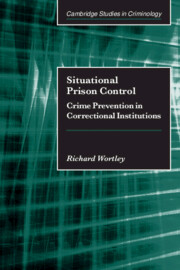Foreword
Published online by Cambridge University Press: 22 September 2009
Summary
Years ago, I was employed by the Home Office as the research officer for a group of training schools for delinquents in the West of England. These were mostly small, open establishments with (for those days) a relatively liberal regime. One of the greatest headaches for staff was a high rate of absconding and I was asked to undertake a study of the problem. As a newly graduated clinical psychologist, my focus was on the personal characteristics and family circumstances of the boys who ran away. I hoped to identify particular kinds of boys who were more prone to abscond and who could be given the necessary care or treatment to avert this response.
Several years and numerous studies later I had to admit defeat. There seemed to be little that distinguished absconders from other boys. But at the same time I chanced upon some large differences between schools in their rates of absconding. These differences in absconding could not be accounted for by differences in populations admitted, but seemed to be the result of differences in the school environment. I argued that schools were likely to vary considerably in pressures and opportunities to abscond. Thus, staff probably differed in how successfully they dealt with bullying or worries about home, both of which could provide the motive for absconding. Schools also varied in their security, their layout and their geographical position, all of which mediated opportunities to abscond.
- Type
- Chapter
- Information
- Situational Prison ControlCrime Prevention in Correctional Institutions, pp. xi - xiiiPublisher: Cambridge University PressPrint publication year: 2002



